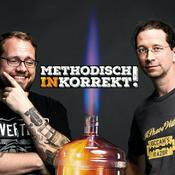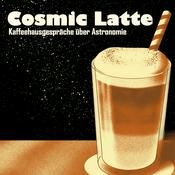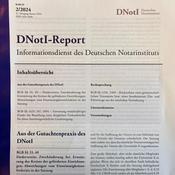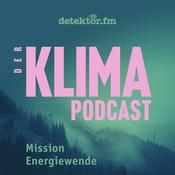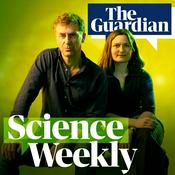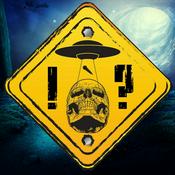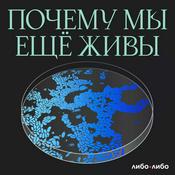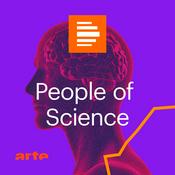1094 Episoden

Galactic Secrets: Unravelling the Milky Way's Chemical Bimodality
06.1.2026 | 29 Min.
SpaceTime with Stuart Gary Gary - Series 29 Episode 2In this episode of SpaceTime, we explore the intriguing history of our galaxy and the secrets of Earth's early water retention.Unraveling the Milky Way's Chemical BimodalityA groundbreaking study suggests that the Milky Way's stellar formation and its unique chemical bimodality may stem from intergalactic gas rather than traditional star formation or galactic collisions. Researchers utilized advanced computer simulations to analyze the formation of 30 simulated galaxies, revealing that the Milky Way's distinct groups of stars, defined by their iron and magnesium content, can emerge through various mechanisms. This research not only enhances our understanding of the Milky Way's evolution but also challenges previous assumptions about the role of smaller galaxies in shaping its chemical structure.Earth's Mantle: A Reservoir of Ancient WaterNew findings indicate that Earth's mantle may have locked away vast amounts of water during the planet's formative magma ocean phase. Researchers discovered that bridgmanite, the most abundant mineral in the mantle, could store significant quantities of water, potentially equating to the volume of all today's oceans. This study reshapes our understanding of how water was retained during Earth's extreme early conditions and its role in the transition to a habitable planet. The implications of this research may provide insights into the geological processes that sustain Earth's dynamic environment.The Astronomy of Standing StonesReflecting on archaeological astronomy, we revisit a pivotal study that revealed how ancient standing stones in Britain were constructed with astronomical alignments in mind. This research confirms that the earliest stone monuments, including the Great Circles of Scotland, were intentionally oriented to mark the movements of the sun and moon. By examining the patterns of alignment, researchers established a connection between these ancient structures and the cultural significance of celestial events, illustrating the sophisticated understanding early Britons had of their environment and the cosmos.www.spacetimewithstuartgary.com✍️ Episode ReferencesMonthly Notices of the Royal Astronomical SocietyJournal of ScienceJournal of Archaeological Science ReportsBecome a supporter of this podcast: https://www.spreaker.com/podcast/spacetime-your-guide-to-space-astronomy--2458531/support.(00:00:00) This is Space Time Series 29, Episode 2 for broadcast on 5 January 2026(00:00:47) New study on the Milky Way's chemical bimodality(00:12:30) How bridgmanite in Earth's mantle may have stored ancient water(00:20:10) The astronomical significance of ancient standing stones in Britain(00:25:00) Science Robert: Sleep apnea linked to Parkinson's disease and more news in science

Stellar Spectacles: January's Night Sky Highlights
02.1.2026 | 37 Min.
SpaceTime with Stuart Gary Gary - Series 29 Episode 1In this episode of SpaceTime, we delve into extraordinary cosmic phenomena and the ongoing exploration of our solar system.Cosmic Matter Ejected at 20% the Speed of LightAstronomers have made a groundbreaking observation of matter being ejected from a supermassive black hole at the center of the barred spiral galaxy NGC 3783, located 135 million light years away. This matter, propelled at an astonishing 20% the speed of light, challenges previously held notions about how such superluminal jets are powered. The findings suggest that a sudden change in the magnetic field, rather than radiation, may be responsible for this high-speed outburst, providing new insights into the mechanisms of black hole dynamics and their impact on galactic evolution.Wind-Sculpted Landscapes on MarsNASA's Perseverance Rover continues its exploration of Mars, focusing on megaripples—large sand formations shaped by wind. These megaripples, some reaching up to 2 meters in height, offer scientists a unique opportunity to study current Martian atmospheric processes. As the rover investigates the Honeyguide region, researchers hope to gain insights into the planet's wind patterns and surface chemistry, which will be crucial for future human missions to Mars.Potential Ocean Beneath Uranus's Moon ArielNew research suggests that Uranus's moon Ariel may harbor a vast subsurface ocean, potentially more than 170 kilometers deep. This discovery, reported in the journal Icarus, highlights Ariel's unique geological features and raises questions about its past interior structure and orbital dynamics. The study indicates that understanding Ariel's ocean could provide crucial context for the moon's surface fractures and cryovolcanic activity, emphasizing the need for future missions to the Uranian system to confirm these findings.www.spacetimewithstuartgary.com✍️ Episode ReferencesAstronomy and AstrophysicsIcarusNASA ReportsBecome a supporter of this podcast: https://www.spreaker.com/podcast/spacetime-your-guide-to-space-astronomy--2458531/support.(00:00:00) This is Space Time Series 29, Episode 1 for broadcast on 2 January 2026(00:00:47) Cosmic matter ejected from supermassive black hole(00:12:30) Perseverance Rover studies wind-sculpted megaripples on Mars(00:20:10) Evidence of a subsurface ocean beneath Uranus's moon Ariel(00:25:00) Skywatch: January night sky highlights and celestial events

Lunar Leap: Artemis 2's Historic Mission and the Future of Moon Exploration
31.12.2025 | 25 Min.
SpaceTime with Stuart Gary - Series 28 Episode 154In this episode of SpaceTime, we explore significant milestones in lunar exploration and the latest challenges in space technology.Accelerated Launch for Artemis 2NASA has moved up the launch date for the historic Artemis 2 manned moon mission to early February, marking the first human journey to the moon in over 50 years since Apollo 17. The Orion spacecraft, named Integrity, will embark on a 10-day mission, completing a free return trajectory around the moon. This episode discusses the mission's objectives, including in-space demonstrations and the deployment of five cubesats, as well as the importance of this mission for future lunar exploration and potential Mars missions.New Insights from Lunar Rock SamplesRecent studies of lunar rock samples have revealed a new timeline for lunar impacts, pushing back the history of Earth's nearest celestial neighbour by 300 million years. The Apollo 17 rock sample, known as 76535, has provided crucial insights into the moon's formation and its geological history. Advanced computer simulations suggest that the impact that formed the Serenitatis Basin may have brought this rock to the surface, reshaping our understanding of the moon's bombardment history and its implications for Earth.Japan's H3 Rocket FailureThe Japan Aerospace Exploration Agency (JAXA) has faced a setback with the failure of its new H3 rocket during a satellite launch. This follows a previous failure during its maiden flight. The H3 rocket, designed to replace the H2, aims to enhance Japan's capabilities in the global space market but has encountered significant technical challenges.www.spacetimewithstuartgary.com✍️ Episode ReferencesGeophysical Research LettersNASA ReportsJAXA UpdatesBecome a supporter of this podcast: https://www.spreaker.com/podcast/spacetime-your-guide-to-space-astronomy--2458531/support.(00:00:00) This is Space Time Series 28, Episode 154 for broadcast on 31 December 2025(00:00:47) NASA accelerates Artemis 2 moon mission launch(00:12:30) New lunar rock samples shift timeline of impacts(00:20:10) Japan's H3 rocket fails to deploy satellite(00:25:00) Study reveals links between social media use and cognitive performance in children(00:27:30) Coffee and tea's effects on bone health in older women

Doomsday Dance: Ramses Mission and the Secrets of Apophis
30.12.2025 | 21 Min.
SpaceTime with Stuart Gary Gary - Series 28 Episode 153In this episode of SpaceTime, we dive into thrilling new missions and groundbreaking discoveries in the universe.Ramses Mission to Asteroid ApophisThe European Space Agency has greenlit an exciting new mission to study the infamous doomsday asteroid Apophis. The Ramses spacecraft will closely observe the 450-meter-wide asteroid as it makes a close flyby of Earth on April 13, 2029, at a mere 32,000 kilometers away—closer than many satellites. Initially feared to be on a collision course with Earth, further observations have since ruled out the threat of impact. However, the Ramses mission aims to understand how Earth's gravitational forces might affect Apophis during this close encounter, potentially setting the stage for future impacts. The spacecraft will deploy smaller probes to monitor changes in Apophis's orbit, rotation, and surface, providing vital data for planetary defense and insight into the evolution of asteroids.Solving the Mystery of ExistenceIn a groundbreaking study, scientists at CERN have made strides in explaining the universe's existence by observing a slight imbalance in the behavior of matter and antimatter. This charge parity (CP) violation suggests that a tiny difference favored matter over antimatter during the Big Bang, allowing the universe to evolve into its current state. The findings, based on 80,000 decays of the Lambda beauty particle, indicate a significant deviation that could reshape our understanding of the cosmos.The Largest Planetary Nursery Ever SeenAstronomers have discovered the largest planetary nursery ever observed, located in a massive protoplanetary disk around a young star. This chaotic environment, cataloged as IRAS230776707, spans an astonishing 650 billion kilometers and showcases intricate structures that hint at the complex processes of planet formation. The observations, made using NASA's Hubble Space Telescope, reveal a unique perspective on how planetary systems may develop in extreme conditions, raising new questions about the dynamics shaping these disks.www.spacetimewithstuartgary.com✍️ Episode ReferencesAstrophysical JournalNatureCERN ReportsBecome a supporter of this podcast: https://www.spreaker.com/podcast/spacetime-your-guide-to-space-astronomy--2458531/support.(00:00:00) This is Space Time Series 28, Episode 153 for broadcast on 29 December 2025(00:00:47) ESA's Ramses mission to study asteroid Apophis(00:12:30) CERN's discovery of matter-antimatter imbalance(00:20:10) Astronomers observe the largest protoplanetary disk ever found(00:25:00) New insights into sleep apnea and mental health risks(00:28:30) Potential discovery of a new ancient human species

Super Kilonova Surprise: Unravelling the Mystery of Cosmic Explosions
26.12.2025 | 28 Min.
In this episode of SpaceTime, we uncover groundbreaking astronomical events and the latest advancements in space exploration.First Ever Super Kilonova DetectedAstronomers have made a significant discovery with the potential detection of the first ever super kilonova explosion. This extraordinary event, cataloged as AT 2025ULZ, is believed to have been triggered by a double supernova explosion, producing both gravitational waves and electromagnetic radiation. Lead author Manzi Kasliwal from Caltech's Palomar Observatory discusses how this unique phenomenon could reshape our understanding of stellar evolution and the formation of heavy elements in the universe. With only one confirmed kilonova event to date, this new discovery presents an exciting opportunity to explore the complexities of cosmic explosions.Blue Ghost 2 Spacecraft Shake TestFirefly Aerospace's Blue Ghost Mission 2 spacecraft has undergone rigorous shake testing at NASA's Environmental Test Laboratory. This critical assessment simulates the intense vibrations and acoustics experienced during launch, ensuring the spacecraft can withstand the harsh conditions of a rocket ascent. JPL engineer Michael Williams explains the importance of these tests in preparing spacecraft for successful missions, as the Blue Ghost 2 aims to deliver multiple payloads to the lunar far side next year.Shenzhou 20 Capsule Returns SafelyChina's Shenzhou 20 spacecraft has successfully completed an unmanned return to Earth after sustaining damage from space debris. Initially intended to bring a crew of Tigernauts back home, mission managers opted for a safe return without the crew due to concerns over a crack in the capsule's viewport. This decision highlights the importance of safety in space missions, while also providing valuable data for future flights.www.spacetimewithstuartgary.com✍️ Episode ReferencesAstrophysical Journal LettersNASA ReportsNature CommunicationsBecome a supporter of this podcast: https://www.spreaker.com/podcast/spacetime-your-guide-to-space-astronomy--2458531/support.(00:00:00) This is Space Time Series 28, Episode 152 for broadcast on 26 December 2025(00:00:47) Astronomers detect what could be the first ever super kilonova explosion(00:15:30) Firefly Aerospace's Blue Ghost 2 spacecraft undergoes shake testing at NASA's JPL(00:20:10) China's Shenzhou 20 capsule returns safely to Earth after damage from space debris(00:25:00) New study reveals the benefits of swearing during physical exertion
Weitere Wissenschaft Podcasts
Trending Wissenschaft Podcasts
Über SpaceTime with Stuart Gary
Höre SpaceTime with Stuart Gary, NEU DENKEN und viele andere Podcasts aus aller Welt mit der radio.de-App

Hol dir die kostenlose radio.de App
- Sender und Podcasts favorisieren
- Streamen via Wifi oder Bluetooth
- Unterstützt Carplay & Android Auto
- viele weitere App Funktionen
Hol dir die kostenlose radio.de App
- Sender und Podcasts favorisieren
- Streamen via Wifi oder Bluetooth
- Unterstützt Carplay & Android Auto
- viele weitere App Funktionen


SpaceTime with Stuart Gary
App laden,
loshören.








